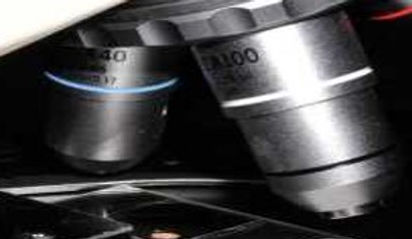Biotech & Medical Industries
As the semiconductor slowdown occurred in the late 1990s the genomics industry was ramping up to speed in the quest for fast and cost saving genome sequencing. Thus, we were able to keep our vibration consulting skills set sharp developing high resolution microscopes and other optical equipment with as little as 25 nm resolution.
The challenge is that this equipment has to work almost anywhere, from table tops, to upper floors of old medical schools on the east coast, to random police stations across the country, and with loud and obnoxious air flow, humidity, and cooling requirements. Vibration isolation, fixturing of optics, and designing for quiet vibration free operation on a very fast passed development schedule makes some of the biotechnology equipment as challenging to engineer as some high resolution semiconductor equipment.

As vibration consultants, we recently provided vibration and structural dynamics engineering consulting on the mechanical design of a powerful genomics tool that could achieve 25 nm rms imaging resolution while on an upper floor of light construction. We worked with the engineering team on the design of the isolation system, the optical structure, the mounting of the optics, the stage system, the cooling system, the environmental enclosure, the fluidics automation, and the frame design. All of these details were critical to the success of the mechanical platform. We were successful in helping this team get the design right the 1st time because we were able to communicate with the engineering team management the need to include structural dynamic considerations in all these important components of the tool.

It should be noted that although we enjoy fixing vibration and structural dynamics issues late in the development and manufacturing phase, it is particularly satisfying to put our years of design and troubleshooting experience to work on a new product with the goal of creating a winning design from the start. It is often our long standing clients that call us in the design phase where our input in steering the design details that affect dynamics are particularly valuable.

The pharmaceutical industry has also had advances in automation and manufacturing. We have worked to make machines quieter for large research labs to give our client and edge over their competition.
We have worked with the medical device industry since the founding of this company more than 30 years ago on small hand held devices such as surgical eye tools, to large surgical robots.
Instruments that enter the human body need to conform to some unique geometries. This sometimes requires very delicate mechanisms in tight spaces. Instrumenting these types of devices to trouble shoot performance issues can be challenging, but is often critical to quick, efficient, problem solving.


We will often need to modify the device to accommodate instrumentation, such as a strain gage, and in doing so we need to be certain that our modification does not significantly alter the dynamic behavior of the device under test and make the results invalid. Poor experimental test design can produce confounding results and steer the design team in the wrong direction.
A strain gage is a flat, flexible piece of elastomer with a thin foil wire pattern that can fit in very small spaces while not significantly affecting mass and stiffness. It measures stretch, and if we know some other parameters like crossectional dimensions and material modulus, we can infer stress, force, moment, sheer, etc. This makes a strain gage ideal as a diagnostic sensor in some situations.
Our customers rely on our experience to focus on the key set of dynamic parameters of the device and its "boundary conditions" so that we can design an experiment that will allow us to more closely characterize the actual problem and find a solution. We always characterize and understand our experimental setup first, before testing, so that we can have more confidence in our results.
For example, we recently worked on a device that is inserted into a very small hole in the body. The mechanism was thus very thin and was suffering from mechanical failures in a force carrying mechanism. We used a small strain gage to determine if the static strain due to the preload was a likely cause of failure, or if it was the dynamic strain that resulted from a spring loaded shock. We used the stain gage to estimate the static and dynamics forces passing through the mechanism and used these force estimates to compared to the levels of force expected given the design of the preloaded mechanism. In reviewing our experimental setup, we knew that the wire routing was crucial to getting a good estimate of the dynamic response as the wire could both slow the shock pulse, and damp resulting vibration response in an unrealistic way. Through careful experimental design we had confidence that our setup matched the actual device closely enough to distinguish the weak point of the system. We then had confidence in our recommendations, and helped the client improve their device.
